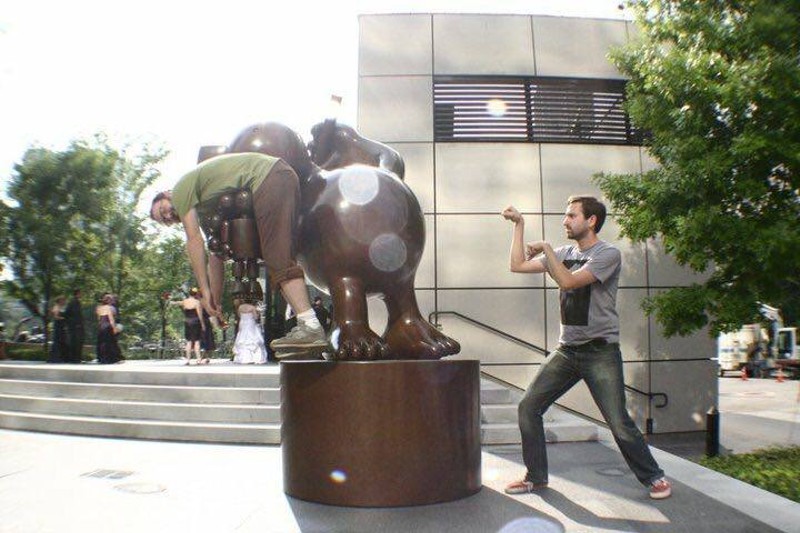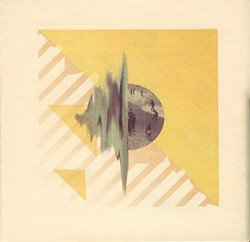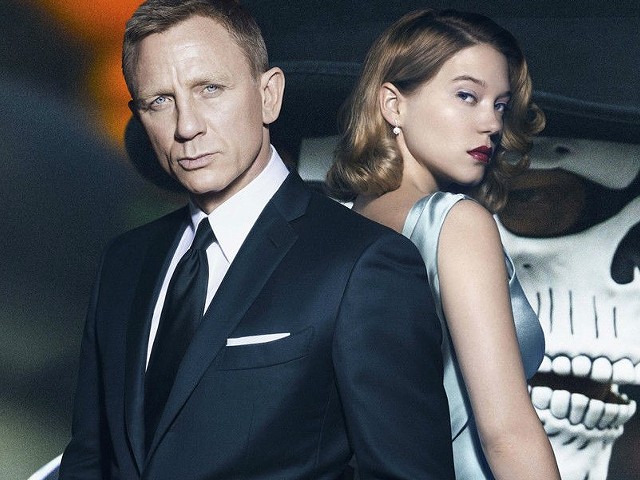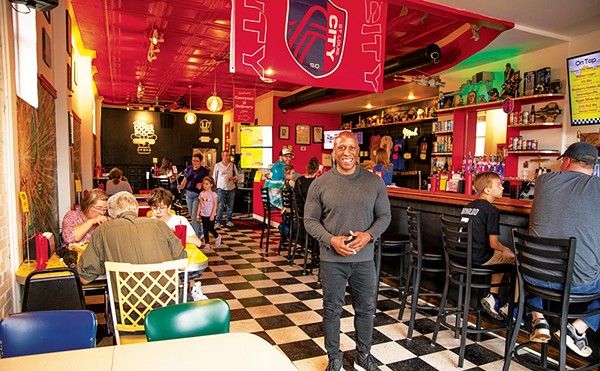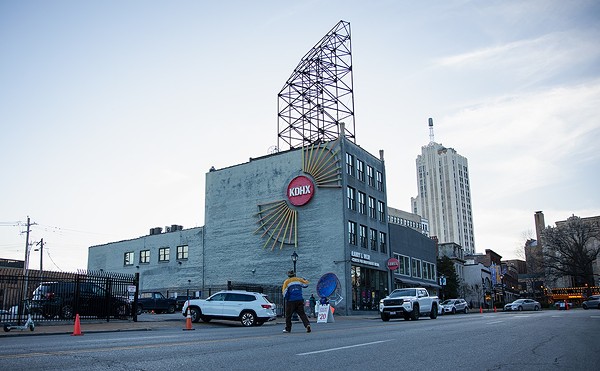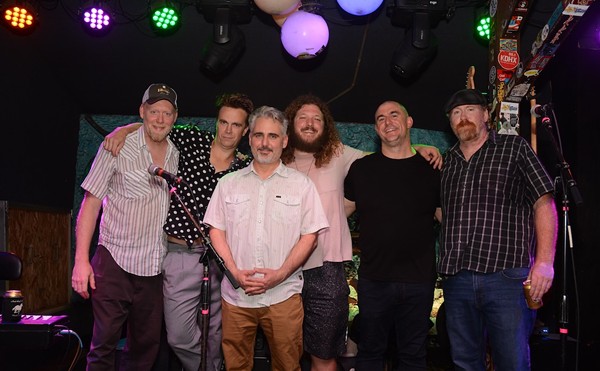Any lover of vinyl records will profess that, alongside the format's touted superior fidelity, the artwork and packaging of an LP can be just as gratifying as the music it contains. That twelve-inch-by-twelve-inch field feels positively luxurious compared to flimsy CD inserts.
The recently released AVAV project understands the importance of presentation, to the point that the music (here contained on a seven-inch record) isn't even necessarily the project's main vessel — the packaging, ingenious and beautiful on its own, gets co-billing. As a collaboration between friends Travis Bursik, a drone-centric musician formerly of Ou Où, and Mike Mccubbins, a graphic artist who has released short films, graphic novels and lots of other printed ephemera, AVAV provides a framework for artists in different media to talk to each other and produce a distinct and conversational work.
The two first met eight years ago and later collaborated on a short film called Sky Reports, made using traffic-cam footage from the Saint Louis Science Center bridge. "There was no collaborative aspect; it was finished. Mike gave it to me, and I added stuff to it," says Bursik.
Mccubbins lit upon the idea for AVAV as a way to engage and collaborate with local musicians by providing a back-and-forth dialogue between musician and graphic artist; the title itself (expanded as "Audio Visual Audio Visual") fairly sums up this idea. The procedure is laid out in full on the project's illustrative and informative website (avavproject.tumblr.com): The musician creates a piece of music, the visual artist interprets that in his or her given medium, and the musician responds by adding to the composition. This operation volleys back and forth "until the work is considered finished." For Bursik and Mccubbins, the process went through six iterations and took about four months to complete.
"When we started out, I thought, 'This is gonna be like a jam, and I'll send him something, he's gonna look at it and send me something,'" says Mccubbins. "But then a couple steps into it I thought, 'We're gonna have to give each other a little bit of what's going on in order to not step on the toes of what the other person is trying to do.'"
"I think it was easier because it was collaborative," says Bursik. "I would get Mike's recent iteration and have an immediate thought, versus me trying to talk about something I built from the ground up, which I hate doing because it sounds contrived to me and sounds like bullshit sometimes when I try to say what I do. You have to fall into genre stuff, and you can have a hard time taking yourself seriously."
Bursik uses GarageBand to make his music "in-camera," as he says, as opposed to spending endless hours on post-production. He likens it to "doing special effects on-set as opposed to CGI in post, because then you're just twiddling shit forever — it's never quite done. I find that really stifling; you feel almost impotent in the face of that, having so many options."
Bursik used some field recordings from Turkey that sound like a call to prayer in one of his iterations; Mccubbins used that nod to incorporate artwork that resembled minarets in his next round. Using images from an old seek-and-find game he picked up at a thrift store, Mccubbins incorporated a grainy black-and-white beach scene amid the cleaner lines and forms he had created in Photoshop.
The artists embraced the recursiveness of the project's structure, both in Mccubbins' permutations of recognizable shapes and a set color palette and in Bursik's minute, granular approach to manipulating samples. In his notes on the project's website, Bursik picks up on the beach scene, which triggered his own interpretations of surf-rock. He writes, "I added some skittery percussion to poke through the waves like the legs of a pier."
Of course, surf-rock is far from the first genre one would associate with the finished track; Bursik's music, as part of Ou Où and as a solo artist, remains difficult to pigeonhole, though his contribution to the AVAV project will be familiar to fans of his previous releases. Swirling, almost metallic, swells hold the center of the track, and they move in slow but perceptible degrees throughout.
The result is a four-minute piece, the length of which was partially predicated upon the medium of distribution — a lathe-cut seven-inch record. "We didn't want to do CDs because they're stupid and small, and cassettes are even smaller," says Bursik. The package, which includes a single-sided square EP and twelve-page book, is limited to twenty copies — the smallest number of lathe-cuts one can order, according to the artists.
"I'm all into making handmade printing stuff and all of that, trying to make something that you're just going to recycle," says Mccubbins.
"That's one of the reasons we avoided CDs," says Bursik. "You work hard on something and then you picture it where the case is cracked in the back seat on the floor of your car. That's how I pictured every demo CD that I would hand out as shows. Artifacts are the only way to make physical media interesting and unique."
Listen to the record in full below:

